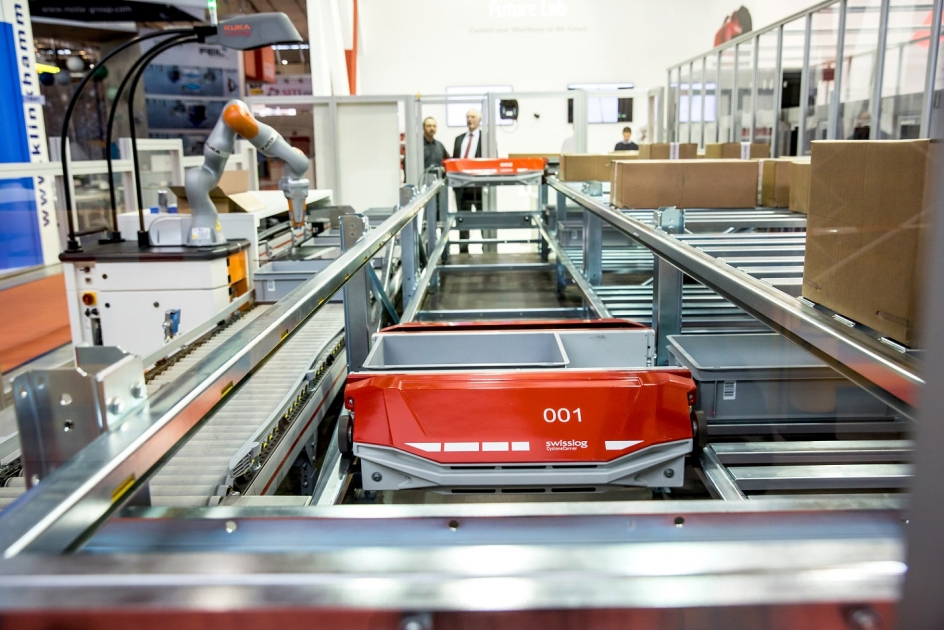
Swisslog presented two new reports that address the challenges of energy efficiency and small order fulfilment
Experts at Swisslog have recently presented their two new
whitepapers Goods-to- Person Solutions: Solving the Challenges of Small Order Fulfillment
and Energy Efficiency in Automated Distribution Facilities, where they provide detailed
insights into the impact of smart automation technology in both ambient and temperature
controlled warehouses.
As a leader in robotic, data driven and flexible automated solutions, Swisslog is dedicated to
helping companies improve the efficiency, productivity and cost effectiveness of their
intralogistics operations.
Intralogistics is evolving from large, rigid systems into modular, flexible, and software-driven
solutions – robot-supported and self-optimizing. Swisslog is at the forefront of these Industry
4.0 initiatives providing innovative solutions for the Retail/E-Commerce, Pharmaceutical,
Food & Beverage and Automotive industries.
Combined skills of man and machine
The first of the whitepapers addresses the challenges facing fulfillment operations in the
rapidly growing e-commerce industry. The report concludes that an omni-channel or
dedicated e-commerce fulfillment center utilizing a streamlined, highly-efficient automated
goods-to- person solution can expect to see a doubling or tripling in picking activity over
conventional manual-based picking methods.
Providing extensive knowledge and insight into the options available to distribution centers
facing the challenge of small order fulfillment, the report discusses Swisslog’s latest
innovation, AutoPiQ, and how it enables direct cooperation between pickers and robots.
When networked with automated goods-to- person warehouse systems, such as
CycloneCarrier, AutoStore or CarryPick, AutoPiQ is able to assist human workers with picking
tasks, permitting workers to focus more on value-added services.
“We see a much more willing attitude on the part of logistics executives toward accepting
automated goods-to- person solutions,” explained Jeff Ross, Vice President Implementation
for E-Commerce/Retail, Swisslog WDS Americas. “The technology has definitely advanced
over the past five years. It is very clear that these high-performance systems can deliver
the productivity they require.”
Several options for energy efficient automation
While automation has offered endless benefits to operations around the globe, some are
concerned with the increased energy demands required to run the systems.
A second whitepaper addresses these concerns and looks at how businesses can
benefit from automation while remaining energy efficient.
The report finds that refrigerated warehousing, while an expanding sector, is the most energy
intensive. Energy is one of the largest expenses for the sector, second only to labor costs.
Goods-to- person solutions, Swisslog says, can recuperate energy from the braking and lifting
of carrier vehicles, and this, combined with energy sharing technologies, can see energy use
reduced by up to 20 percent.
“The most efficient shuttle and robotics systems have been engineered to reduce carrier
weight and optimize weight/payload ratios for lessened energy requirements,” the whitepaper
states. “Since these systems provide dense storage capacity, they are also ideal for
minimizing refrigeration energy costs, when compared to manual small quantity picking in
traditional refrigerated warehouses.”
The whitepaper also highlights how positioning power monitoring devices throughout
materials handling equipment gives logisticians the ability to measure, visualize and track
energy consumption throughout the distribution facility in real time. “This provides an
unparalleled level of transparency into energy usage, and allows the distribution systems to
operate in a very energy efficient manner,” says Swisslog’s Samuel Schaerer, Controls
Development Manager with Swisslog Warehouse and Distribution Solutions’ Technology
Center, located in Buchs, Switzerland.


























